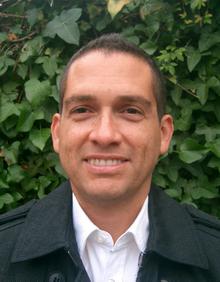I’ve always appreciated the environment, but had previously taken on the role of spectator. I credit this magnificent city of ours with inspiring me to change my passive respect of nature to taking an active role in trying to preserve it. The strong sense of community in Bristol and the green-mindedness of its residents is infectious, and is evident in the number of fantastic projects we have which are led by the people and by our local government.
I craved more information about our environment so started attending lectures and events that are regularly held by the Cabot Institute and various departments across the university. As my insight to the issues we face grew, I realised I needed to increase my understanding and hopefully align my career in a way in which I could have a positive impact. I decided to enrol in a masters in Climate Change Science and Policy so I could appreciate the scientific intricacies rather than relying on what I heard, and what I read in the media.
My course enabled me to learn about climate modelling and the difficulties of implementing environmental policies, not just logistically but in terms of ethics and opinion. It is one thing to be passionate about science and research, it is quite another to communicate that to a non-specialist in a way that the magnitude and seriousness of climate change is realised. A warming climate will affect the entire globe and all sectors within it. Bridging the gap in knowledge between climate scientists and policy makers/society is therefore paramount. People often rely on the media as their main source of information and indeed it can successfully act as an education broker between scientists and the public. The seemingly omnipotent power of the media to mould opinion can be beneficial, but do we really know if what we’re reading is the truth?
I was offered the opportunity to explore this question, and it was the Environment Agency (EA) that requested the answers. Specifically, I conducted my dissertation on the accuracy of the UK media in reporting of extreme weather events. It may seem a rather unusual project to be proposed by the EA, so I shall explain. Within the organisation is a climate change branch, a part of which is the ‘Climate Ready Support Service’. Their objective is to provide advice and support to businesses in order to prevent and mitigate the effects of extreme weather events and climate change. The Environment Agency uses recent extreme weather events to exemplify realistic scenarios that could befall a vulnerable business.
The speed, scope and accessibility of the media makes it a valuable tool, during and immediately after a weather event. The fast-paced nature of modern reporting and social media necessitates that to some extent the EA relies on information from news organisations. Additionally, there are vastly more journalists than there are staff in the ‘Climate Ready Support Service’ therefore media reliance is essential. When the EA republishes this information it must be relevant, accurate and consistent, and it was my mission to quantify the reliability of UK media and to assess the confidence that the EA can have in it.
I was not able to analyse all UK media so I studied a selected sample from the Guardian, the Telegraph and the Mirror. I chose them because they contain a mix of broadsheet/tabloid, political affiliations and demographics. I analysed sixty two articles across three extreme weather events: ex-Hurricane Bertha (2014), the spring floods (2012) and the Birmingham tornado (2005). This provided a range of recent short, high impact events and longer-lasting cumulative ones. I conducted content analysis on each article, breaking the text up into study units that could be verified by official sources such as government documentation, academic journals and weather data. Media accuracy is not as straightforward as being right or wrong, not just the objective facts. Subjective inaccuracies also play a part, and can fundamentally alter the final message or mislead the reader from the truth. I categorised these as omission of information, exaggeration/under-exaggeration, personalisation, sensationalism and general confusion.
The results suggest that overall the UK media is 77.9% accurate. The Guardian achieved the highest overall accuracy (83.8%), followed by the Telegraph (76.2%) and the Mirror obtained the lowest accuracy rate (72.5%). Of more consequence to the EA is objective (factual) accuracy as opposed to subjective accuracy, and, the Guardian is the most reliable of the three publications in this respect (94.3%). Even though it is a broadsheet, the Telegraph was less objectively accurate than the Mirror with 85.8% and 87.3% accuracy respectively. Across all three publications, factual inaccuracies such as measurements, geolocations, timings, names etc. were most prevalent with 30%. This was followed by omission/addition as the next most common error (27%). Exaggeration was also significantly evident in the press accounting for 17% of the total inaccuracies.
What does this mean for the EA? This research hopefully clarifies which publications are worth relying on most heavily when obtaining their information. I would still recommend the agency continue to conduct their own internal fact checks because evidently there are still errors. Additionally, it was a one person study, with only one perspective and a limited sample size. As with any research, there’s always more that can be done to validate the findings and as this was the first study to investigate media accuracy of extreme weather events, more is warranted before sweeping conclusions can be made.
What I found interesting was that of the sixty two articles analysed only four of them mentioned climate change within the content. It is the EAs aim to embed climate change messages within all aspects of their organisation, and with the projected increase of such events I would have expected more linkage in the media. After interviewing some journalists a lot of them agreed that climate change should be associated with not just extreme weather stories, but all topics such as education, health and finance. There are practical limitations in achieving this but perhaps in the future, climate change will always be considered in all aspects of our global society. For now we should remain hopeful that we make some significant steps forward after the United Nations Climate Summit in December, and that Bristol continues its European Green Capital ethos into 2016 and beyond.
It was a great experience knowing that my work might have a real world impact and my contacts in the Environment Agency were really helpful throughout the process. I am now working within the Sustainability Department here at the University of Bristol with the aim of reducing our environmental impact by implementing the S-Labs Initiative (Safe, Secure, Sustainable Labs).
—————————–
This blog is written by Anna Lewis who recently graduated from the Climate Change Science and Policy MSc at the University of Bristol. As part of her course she undertook a Cabot Institute pilot project called Community Based Learning which connects postgraduate students with organisations in order to help them solve a real-world problem. If your organisation would like to get involved in Community Based Learning with the University, please contact cabot-cbl@bristol.ac.uk.
 |
| Anna Lewis |
Anna now works at the University implementing sustainable laboratories throughout the institution.
















